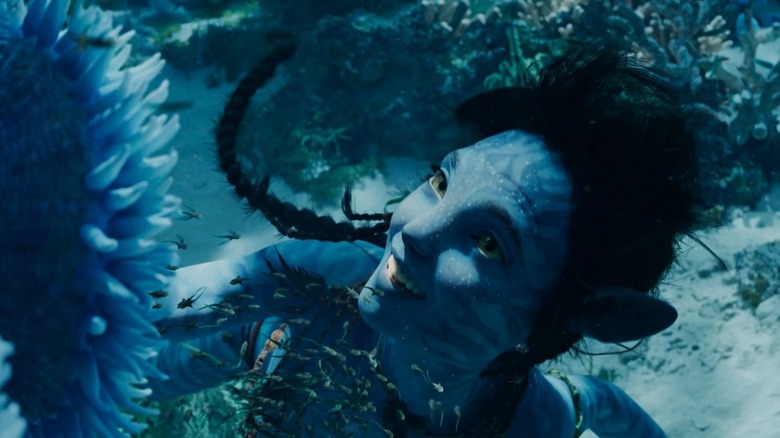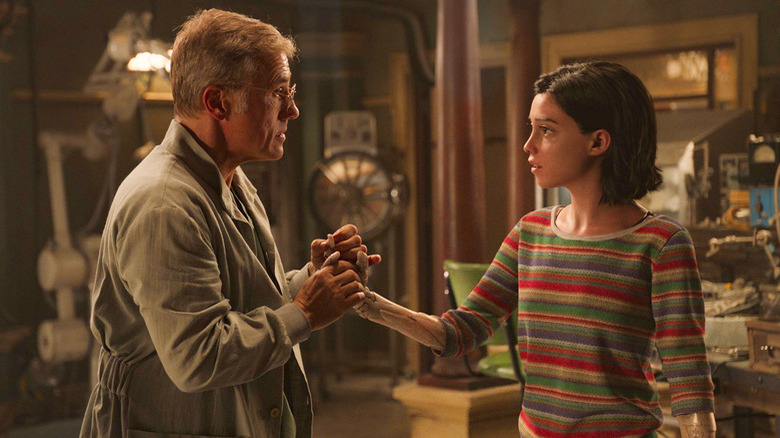Pandora Gave Avatar An Advantage Alita: Battle Angel Didn't Have
The "Avatar" movies are responsible for some stunning world-building. The franchise's best quality is how it transports you to an alien world that feels real, to the point where you might get depressed after watching. The film has landscapes you would want to visit, flora you want to touch, animals you want to run away from after they try to kill you, and cultures that feel rich in detail. Never mind that the scripts aren't the best or the most original, because the movies are not about that, they are about experiencing something you can only experience in the theater watching the film, and about the world of Pandora.
A big part of why Pandora feels so lived-in is the VFX artistry involved, from the environments and the mind-blowing water simulations of "The Way of Water," to the varied creatures that inhabit the world, and the performance capture that bring the Na'vi to life.
Not only do these elements help make "Avatar" feel real, but it gives these films a huge advantage over other VFX-heavy films, like "Alita: Battle Angel."
Different priorities and issues
In a behind-the-scenes video about the making of "Alita: Battle Angel," producer Jon Landau talked about the biggest difference between that film and "Avatar," saying how the key to that movie was that they didn't need it "to be photo-real because you can't tell me what 'real' is on Pandora. We only need it to be photographic."
Instead, for "Alita," "We're on Earth," he said. "Alita needs to be photo-real so that she can stand right next to Christoph Waltz and look together, of one in the frame."
This makes a lot of sense. "Alita: Battle Angel," also known as the remake of "Spy Kids 3-D: Game Over" looks stunning, but the focus was somewhere else in the "Avatar" movies. As Landau says, the live-action manga adaptation needed first and foremost to convince the audience that the titular Alita looked real and that her giant anime eyes aren't super creepy — everything else in that world is just eye-candy. The issues with that movie were bigger if that one goal wasn't met. It's the same issue most other blockbusters face today, particularly superhero movies. If a digital body double or the immediate environment the characters interact with doesn't look 100% convincing and photorealistic, it ruins the immersion and pulls the audience out of the moment.
That is not a problem in "Avatar," which has the advantage of having an alien world they can explore and design from the ground up. The alien creatures and the Na'vi, the most photorealistic things in the movie, are still relatively cartoony, so you can get away with them looking a tiny bit off.

